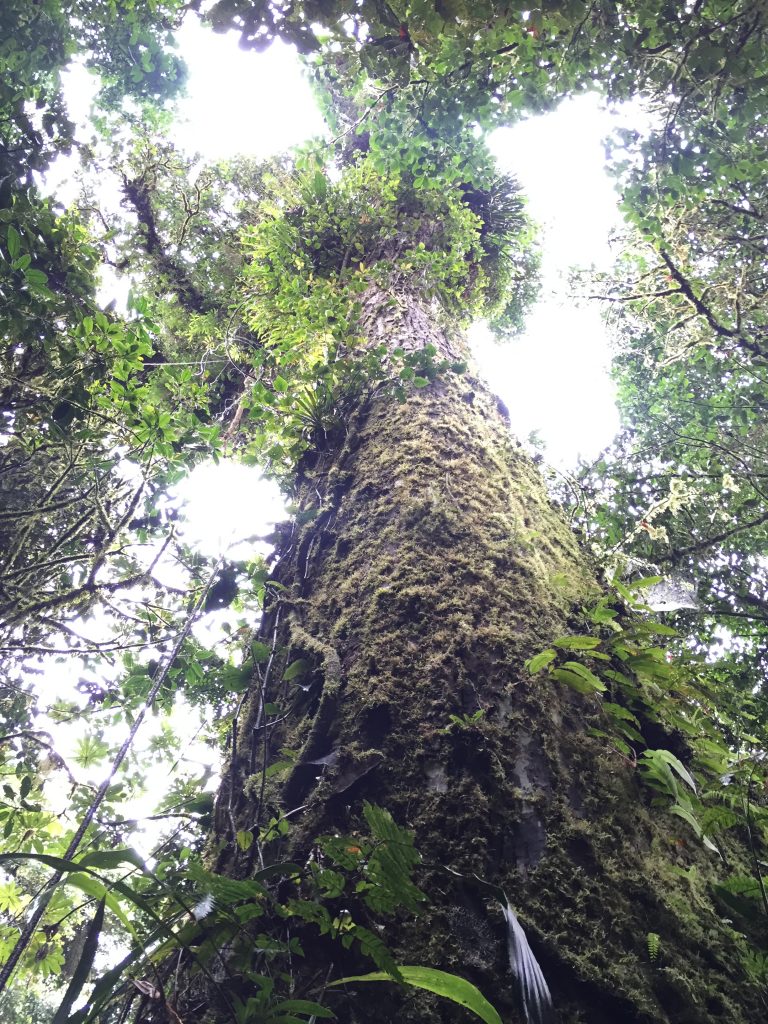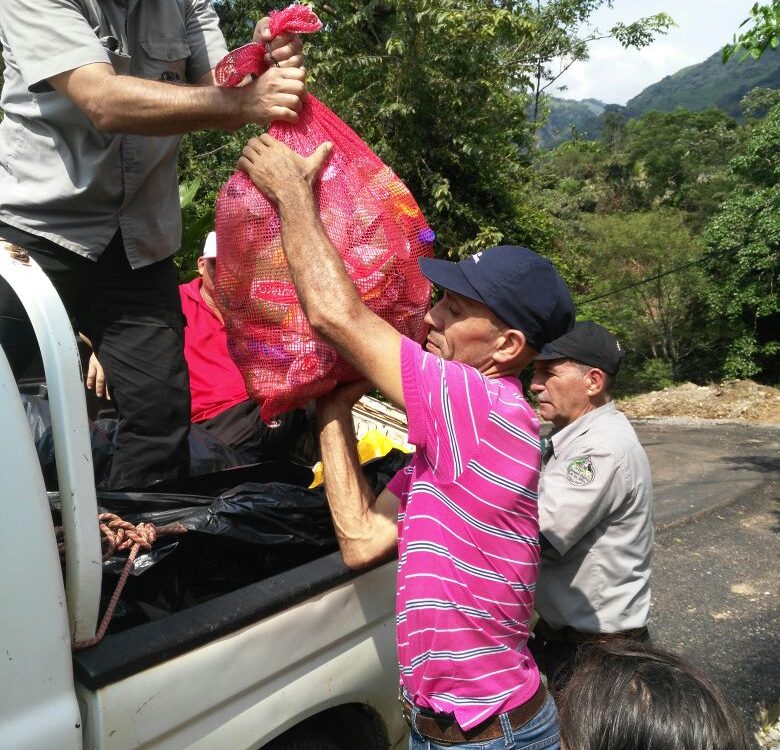
Plantas, entre plantas, sobre plantas: Epífitas!
23 junio, 2017
La pequeña pero impresionante guatusa
14 julio, 2017By Monika Buczak
Procnias tricarunculatus, better known as the Three-wattled Bellbird or Pájaro Campana, is easily heard in the Bajo del Tigre Reserve from June to October. The male bellbird’s call is a characteristic “BONK” that resonates throughout the forest in order to attract mates during the breeding season. This loud call generally follows a series of quieter, piercing whistles; the distinct song makes the bellbird relatively easy to track down among the branches.
The male bellbird is easy to spot with its gleaming chestnut body and stark white head. A closer look reveals three grayish-black wattles hanging from the base of the beak. Female bellbirds, on the other hand, are smaller and have no wattles, and their plumage varies in color from olive to yellowish. Young males sport the same coloring as females before they mature, except with short wattles hanging from the beak.
Bellbirds are a migratory species endemic to the Central American countries of Costa Rica, Panama, Nicaragua, and Honduras. They breed during the summer months in foothills and highland moist forest areas, including parts of the Children’s Eternal Rainforest. During the nonbreeding season, the bellbirds descend to foothills and lowlands on both slopes down to the coasts. Along the way, they live off of a diet of wild avocados. (It’s worth mentioning that the avocado trees rely on the bellbird and other fruit-eating birds to disperse their seeds – in other words, the birds and their food are mutually dependent on one another. For more on this, see our recent blog on the avocadoes themselves.)
Currently, the bellbird holds a “vulnerable” conservation status according to the IUCN. As is the case with many vulnerable, threatened, and endangered species, the biggest threat to bellbird populations is habitat loss. Much of the habitat the birds require for migration, especially in the lowlands, has been (and some is still being) cut down to make room for pineapple, bananas, cattle, and other agricultural uses. The bellbird’s altitudinal migration pattern makes conservation all the more challenging, because it utilizes diverse habitats in a variety of landscapes depending on the time of year.
Over the past decade, a number of conservation-minded organizations have united to address the challenge of protecting forested areas for the bellbird (which in turn serves as a sort of “umbrella species” for the protection many other species that share its habitat). This collaboration has led to the definition of the Bellbird Biological Corridor – a 66,000 ha swath of land that descends from the edge of Monteverde’s protected areas on the Pacific slope all the way down to the coastal mangroves on the Gulf of Nicoya.
The Monteverde Conservation League is proud to be a founding and active member of the Bellbird Biological Corridor.
Want to learn more?
Bellbird Corridor – Monteverde Institute
Official Corridor Site (Spanish only)
Monika Buczak is a student at Lehigh Univeristy. She completed an internship with the Monteverde Conservation League & Children’s Eternal Rainforest in July 2016. Photograph by Russ Kumai.



